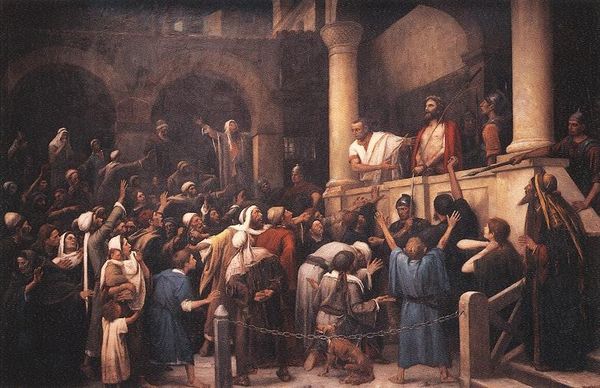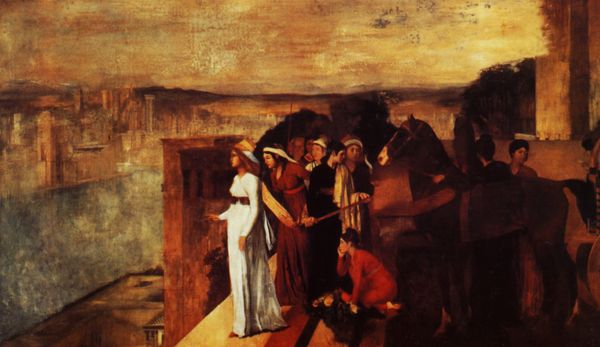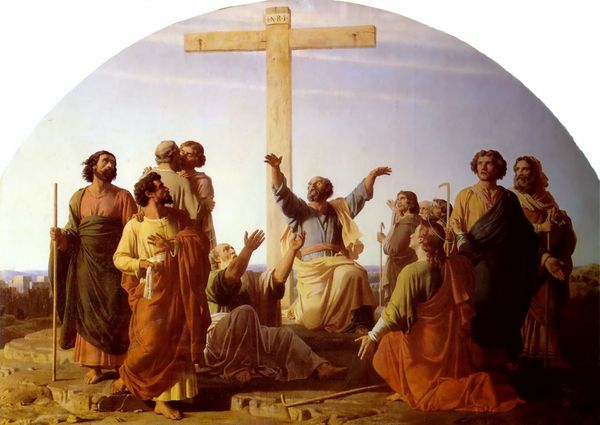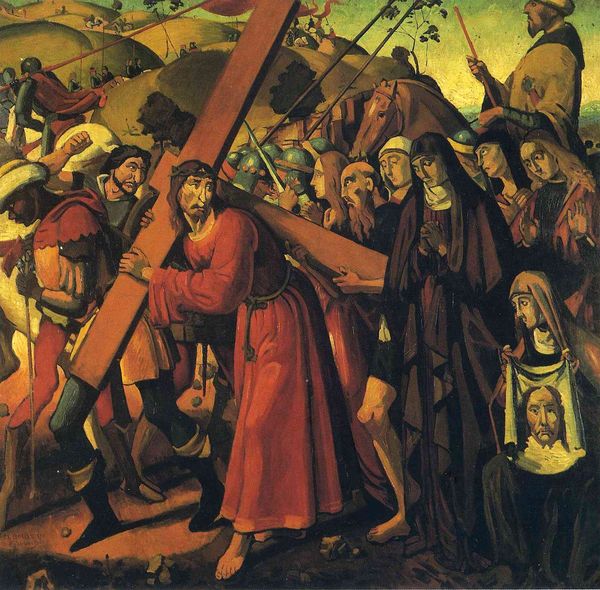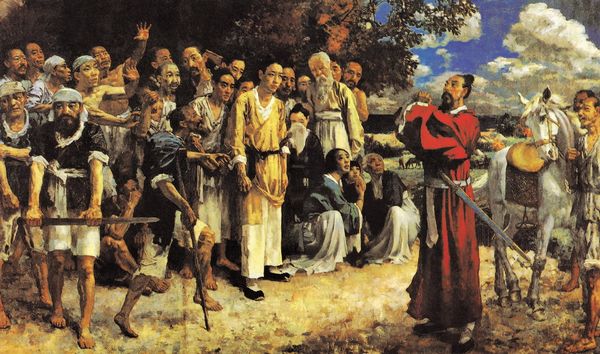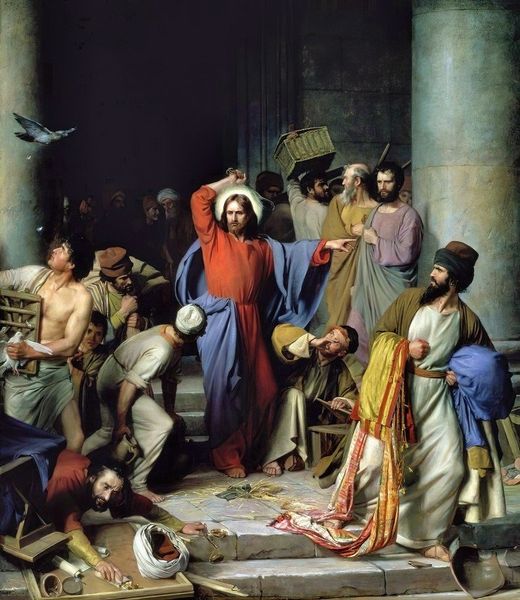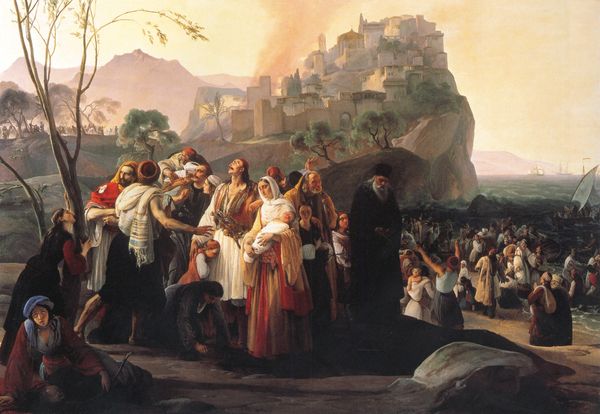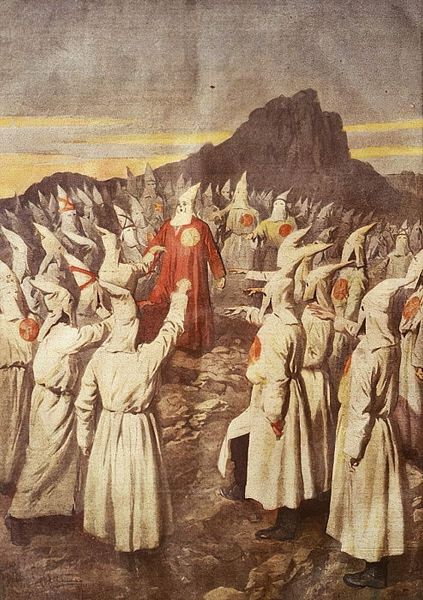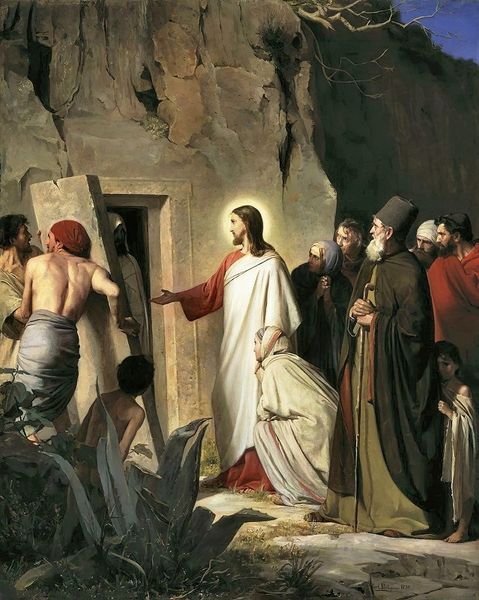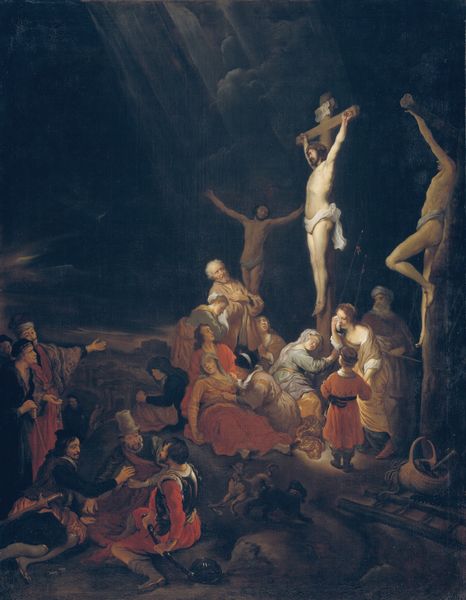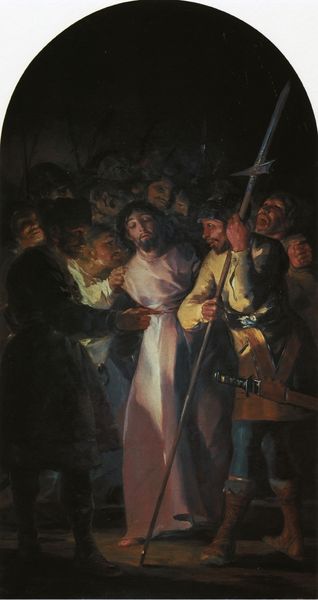
Copyright: Public domain
Curator: Munkácsy's "Golgota," executed in 1884, dominates the space before us with its dramatic scale and tenebrous atmosphere. Editor: Whoa, it feels like I’m actually standing on that bleak hillside. I mean, the weight of that moment just hits you, doesn't it? It's suffocating almost, all that darkness. Curator: Indeed. Note how the artist utilizes oil paint to craft a highly structured composition. Observe the strategic arrangement of figures, their placement guides the viewer's eye upwards to the crux of the narrative, that harrowing image of crucifixion at the summit. Editor: Right, and the colors! So much dark, earthy stuff – browns, reds, blacks. But then BAM! This explosion of light around the body of Christ, totally makes your heart leap a little, even if you're not particularly religious. Like a beacon of hope trying to pierce the despair. Curator: Precisely. Munkácsy employs painterly brushstrokes and careful underpainting to heighten the scene's emotional intensity. There’s a potent semiotic relationship here – darkness equating to despair, the light to the divine promise. Editor: I can’t help but focus on the people at the base of the hill, like that Roman soldier almost smugly surveying the scene or the woman, maybe Mary Magdalene, clinging to the cross in grief. Every figure feels individualized, not just some biblical prop. They are people in utter torment. Curator: Consider the socio-political climate of the late 19th century, specifically Hungary, Munkácsy's homeland, it was then grappling with themes of national identity. "Golgota" can be viewed through a lens that relates sacrifice, suffering and hope towards potential liberation. Editor: You know, it’s funny… I always thought religious paintings were kind of… I don’t know, stale? But this, it’s so raw and human. You can almost feel the grit under your feet, the horror rising up from within yourself, maybe even a sliver of grace. It makes you feel alive, in a strange way. Curator: A comprehensive assessment invites acknowledging how successfully the piece acts as an artistic and deeply personal exploration on humanity's relationship to suffering. Editor: Yes, and like a really, really intense poem made of color and brushstrokes. Thanks, Mihály! You kind of ruined my day, but, like, in a good way.
Comments
No comments
Be the first to comment and join the conversation on the ultimate creative platform.
